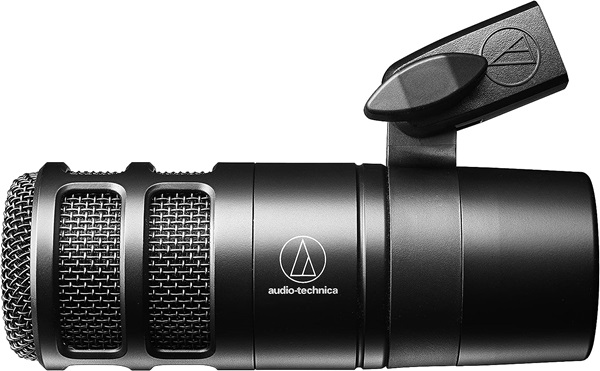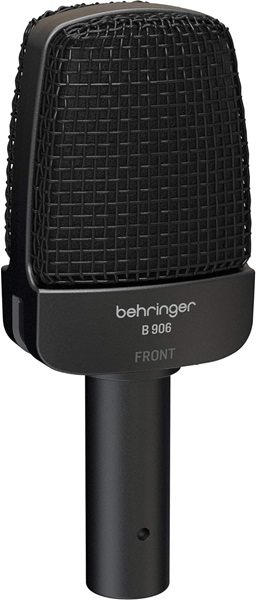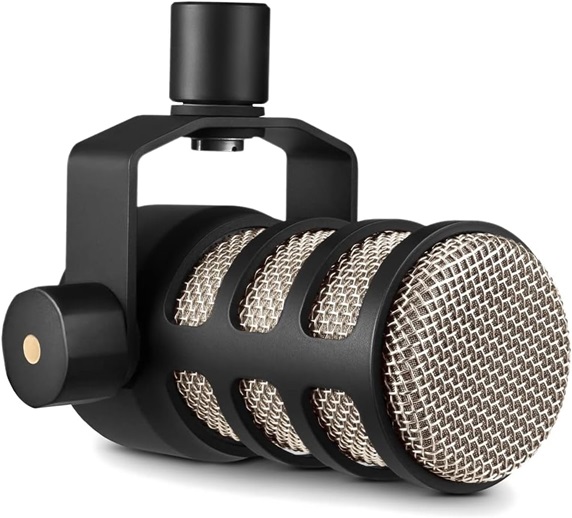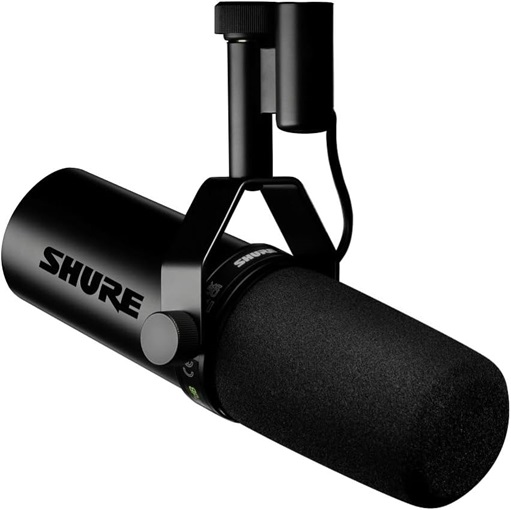For bass amp recording, the right microphone can make the difference between muddy sounds and clear, punchy bass lines. A study by the Journal of Audio Engineering Society suggests that microphone choice significantly affects the captured sound quality, highlighting the necessity for specialized mics. Here, we’ll break down the top microphone contenders for miking your bass amp.
Key Features to Consider:
- Frequency Response: Look for mics that offer a response starting from 20Hz to capture the full spectrum of your bass’s sound.
- Polar Pattern: Prefer cardioid or super-cardioid patterns for their ability to focus on sound coming directly from the bass amp while minimizing background noise. This is crucial for clean recordings in both studio and live settings.
- Durability and Mounting: Given the high volume levels and physical vibrations often associated with bass amps, a mic’s build quality, and ability to securely mount on stands or amps are key. A robust design ensures longevity and consistent performance.
Whether in the studio or on stage, the ideal mic will capture the essence of your bass, providing a solid foundation for your music. As we explore the top picks, keep these features in mind to find the mic that best suits your sound and setup.
Outline
ToggleBest Mics For Bass AMPs Table
| Best Mics for Bass AMPs | Connectivity Technology | Frequency Range | Audio Sensitivity | Buy Now |
|---|---|---|---|---|
| Audio-Technica Mics For Bass Amps | XLR | 15 KHz | 28 dB | Check On Amazon |
| Behringer Mics For Bass Amps | XLR | -- | 52 dB | Check On Amazon |
| Rode Mics For Bass Amps | XLR | 20Hz ~ 20kHz | 56 dB | Check On Amazon |
| Sennheiser Pro Audio Mics For Bass Amps | XLR | 20 KHz | 54 dB | Check On Amazon |
| Shure Mics For Bass Amps | XLR | 20 KHz | -- | Check On Amazon |
Best Mics For Bass AMPs Reviews
1. Audio-Technica Mics For Bass Amps

This microphone has built for different recording situations, capturing sounds 15K Hz. It works well with different recording equipment. It weighs 615 grams (21.7 ounces) which is strong and dependable for getting high-quality sound.
Best Features
- Professional-grade sound quality.
- Large diaphragm for clear audio.
- Versatile for single and dual vocals.
- Frequency range of 15K Hz
- Weighs 615 grams (21.7 ounces)
- Suitable for various recording scenarios.
- Audio sensitivity of 28 dB
- Connectivity Technology XLR
- The compatible devices are Radio, Amplifier, Speaker, Gaming Console
- Unidirectional polar pattern
- Excellent noise isolation.
- Complete package with stand, adapter, and carrying pouch.
Pros
- Affordable price for its quality.
- Smooth and natural sound capture.
- Convenient accessories included.
Cons
- Lack of Phantom power
2. Behringer Mics For Bass Amps

With a sensitivity of 52 dB and a signal-to-noise ratio of 75 dB, the B 906 helps you get good audio quality. This microphone is perfect for musicians and audio lovers who want a high-quality microphone that can handle different sound needs.
Best Features
- Versatile with tailored frequency response.
- Super-cardioid pattern reduces background noise.
- Switchable low-cut filter for customization.
- frequency range of 50Hz to 16kHz
- 52 dB audio sensitivity
- Connectivity Technology XLR
- Super Cardioid polar pattern
- Captures a wide range of instruments and vocals.
- signal-to-noise ratio of 75 dB
- Suitable for live performances, recording, and broadcasting.
Pros
- Reduces unwanted background noise effectively.
- Versatile for various sound-capturing needs.
- Great for both live and studio applications.
Cons
- May not Require Additional Accessories
3. Rode Mics For Bass Amps

The PodMic always works well with its output impedance of 320Ω and sensitivity of 56 dB. It can pick up even the smallest details with a sensitivity of 1.60mV at 94 dB SPL. It has great sound quality and cool features that makes your recordings better.
Best Features
- Internal pop filter and shock mount for cleaner recordings.
- Sensitivity of 1.60mV at 52 dB SPL captures subtle details.
- Durable and well-designed.
- Connectivity Technology XLR
- Unidirectional polar pattern
- Compatible with PSA1
- Excellent sound quality.
- Impedance of 320Ω
- Cardioid pickup pattern reduces background noise.
- Suitable for podcasting, livestreaming, and speech recording.
Pros
- Built-in pop filter and shock mount.
- Versatile for various recording applications.
Cons
- Cardioid pattern may not suit all recording scenarios
4. Sennheiser Pro Audio Mics For Bass Amps

This microphone is the best option in any situation because it records the voice with amazing detail and accuracy. The microphone is made to be strong with a solid metal design. It is a dependable microphone that will stay with you for a long time on your musical journey. It can handle the challenges of being on the road. It is a reliable microphone that will last a long time.
Best Features
- Superb sound quality with high signal-to-noise ratio.
- Durable, robust metal construction.
- Connectivity Technology XLR
- Super Cardioid polar pattern
- The compatible devices are Radio, Amplifier, Karaoke Machine, Speaker
- Audio sensitivity of 54 dB
- Advanced shock-mounted capsule for clear vocals.
- Hum compensating coil for interference-free recording.
- Suitable for both live performances and studio use.
- Long-lasting and rugged design.
Pros
- Exceptional audio clarity.
- Versatile for various musical settings.
- Minimized interference and noise.
- Ideal for demanding vocalists.
Cons
- Reduces electrical interference
- May not come with additional accessories.
5. Shure Mics For Bass Amps

The microphone’s special way of listening helps it pick up your voice well and reduce unwanted background noise. It comes with low noise level of 28dB, resulting in pristine, noise-free recordings. It is a tool that helps unique and outstanding content.
Best Features
- Wide Frequency Range (20KHz)
- Built-in Preamp
- Unidirectional Polar Pattern
- Connectivity Technology XLR
- Built-in boost of +28dB
- 3/8” Thread Adapter
- Large Foam Windscreen
- Adjustable Gain (+18dB or +28dB)
- Low Noise Level (28dB)
- Excellent audio fidelity
Pros
- Versatile for various applications
- Effective noise reduction
Cons
- Higher price compared to some other microphones
Buying Guide For The Best Mics For Bass Amps
When searching for the best microphones for bass amps, it’s essential to consider several key features to ensure you make the right choice:
1. Frequency Response
Why it Matters: Frequency response refers to the range of frequencies that a microphone can accurately capture and reproduce. When selecting a microphone for a bass amp, you should look for one with a frequency response that comfortably covers this range. A good bass mic will have a strong response in the low-frequency range, ensuring that the depth and power of the bass are accurately captured. Moreover, some microphones are designed with a slight boost in certain low-frequency ranges to enhance the warmth or punch of the bass sound.
What to Look For: Seek out microphones with a frequency response that starts at least as low as 20 Hz and extends well beyond 250 Hz to ensure they can capture both the fundamental tones and the harmonics of the bass. A broad frequency response ensures the mic can accurately reproduce the full sonic spectrum of your bass amp.
2. Polar Patterns in Bass Mics
Polar patterns describe how microphones pick up sound from different directions, affecting how well they isolate the sound source and reject noise from other directions. This is crucial for recording in environments with multiple instruments or in live settings. There are three main polar patterns to consider:
a. Cardioid
Why It Matters: Cardioid mics are designed to capture sound from the front while rejecting noise from the back and sides. This makes them ideal for isolating your bass amp from other instruments on stage or in the studio.
What to Look For: Look for a cardioid mic with a strong front-facing sensitivity if you need to minimize room noise and feedback. These mics typically have a numerical value indicating their angle of sound acceptance, often around 180°.
b. Supercardioid
Why It Matters: Supercardioid mics offer a tighter pickup pattern than cardioid mics, providing more isolation and less sensitivity to side sounds. However, they have a small lobe of sensitivity to the rear.
What to Look For: These mics are suitable for loud environments where microphone bleed and feedback are concerns. The numerical specification will indicate a narrower angle of acceptance than cardioid mics, often around 150°, with a small rear pickup pattern.
c. Hypercardioid
Why It Matters: Hypercardioid mics have an even tighter front pickup pattern than supercardioid mics, offering the highest level of sound source isolation. They also have a more pronounced rear lobe pickup.
What to Look For: Ideal for extremely loud environments and for when you need the utmost isolation of your bass amp. The acceptance angle is narrower than that of supercardioid mics, typically less than 120°, with a more significant sensitivity to sounds directly behind the microphone.
3. Durability and Mounting
Why It Matters: Durability is crucial for microphones used with bass amps, as these devices are often subjected to high sound pressure levels, potential physical shocks during live performances, and frequent transport. A durable microphone will withstand these rigors, ensuring a long service life and consistent performance. Additionally, the mounting system of a microphone determines how easily and securely it can be positioned in relation to the bass amp. A good mounting system allows for precise placement, which is critical for capturing the best possible sound.
What to Look For
- Material and Build Quality: Look for microphones constructed with robust materials such as metal bodies and reinforced grilles. These materials offer better protection against drops, knocks, and other forms of physical stress.
- Shock Resistance: Some microphones are designed with internal shock mounts that minimize handling noise and vibrations transmitted through mic stands, which is particularly important when mic’ing loud bass amps.
- Mounting Options: Consider mics with versatile mounting options, such as clip-on designs or those compatible with standard mic stands, allowing for easy adjustment and stable positioning.
4. Signal to Noise Ratio (SNR)
Why It Matters: The Signal to Noise Ratio (SNR) of a microphone indicates the level of the desired signal compared to the level of background noise it picks up. A higher SNR means that the microphone is better at capturing the sound from the bass amp while minimizing unwanted ambient noise. This is crucial for both live performances and recording sessions, where clarity and fidelity of the bass sound are paramount.
What to Look For
- High SNR Values: Look for microphones with a 70 dB or higher. A higher number suggests better performance in distinguishing between the sound source (bass amp) and background noise.
- Directionality: Directional microphones, such as cardioid or supercardioid, naturally have better SNR as they focus on the sound coming from in front of the mic and reject sounds from other directions.
5. Noise Level
Why It Matters: The inherent noise level of a microphone, often referred to as self-noise or equivalent noise level, is the amount of noise that the mic generates by itself. Lower noise levels are essential when recording or amplifying bass, as they ensure the cleanest, most transparent sound capture without the addition of unwanted hiss or hum.
What to Look For
- Low Self-Noise Specification: Look for microphones that specify a low equivalent noise level, ideally less than 20 dBA. This figure indicates the microphone’s self-generated noise and lower values mean quieter operation.
- Quality Preamps: For condenser microphones, the quality of the built-in preamplifier can greatly influence the noise level. High-quality preamps can provide cleaner gain, reducing the overall noise floor.
6. Connectivity Technology
Why It Matters: Connectivity technology determines how the microphone connects to your audio recording or amplification system. It impacts the ease of setup, the quality of the audio signal transmitted, and the compatibility with various devices.
What to Look For
- XLR Connections: The most common and professional-grade connector, offering balanced audio that reduces noise over long distances. Ideal for studio and live settings.
- USB Microphones: Provide a direct connection to computers for digital recording, suitable for home studios or podcasters. Look for those with high-quality A/D converters.
- Wireless Connectivity: Offers flexibility and mobility, especially useful for live performances. Ensure the wireless system has a reliable connection with minimal latency and interference.
7. Impedance
Why It Matters: Impedance affects how well the microphone’s signal is transferred to the sound system or recording device without loss. Microphones with very high or very low impedance can result in poor sound quality or compatibility issues with other audio equipment.
What to Look For
Low to Medium Impedance: Generally, look for microphones with an impedance between 150 to 600 ohms. This range is compatible with most professional audio equipment and ensures a clean signal transfer.
8. Audio Sensitivity
Why It Matters: Audio sensitivity measures how effectively a microphone converts acoustic pressure into an electrical signal. A microphone with higher sensitivity will pick up quieter sounds more clearly, which is essential for capturing the full dynamic range of your bass amp.
What to Look For
Sensitivity Rating: Look for a sensitivity rating expressed in dBV or mV/Pa. Microphones with a higher value (closer to zero or positive) are more sensitive and can capture a wider range of sounds from soft to loud.
9. Power Source
Why It Matters: Some microphones, particularly condenser microphones, require an external power source to operate. The power source can affect the microphone’s versatility and where it can be used.
What to Look For
- Phantom Power: Many condenser mics need 48V phantom power, supplied by audio interfaces, mixers, or external phantom power supplies.
- Battery-Powered: Some microphones come with internal batteries, which is convenient for use in locations without access to phantom power.
- Passive Operation: Dynamic microphones generally do not require a power source, making them more versatile for different settings.
10. Compatibility
Why It Matters: Compatibility encompasses how well the microphone integrates with your current audio equipment, including the bass amp, mixing consoles, audio interfaces, and recording software. A microphone’s impedance, output connection type, and the recording environment’s specific requirements all play a role in ensuring seamless integration and optimal sound quality.
What to Look For
Software and Digital Compatibility: For setups involving digital recording, check that the microphone’s output is compatible with your audio interface and recording software. Some modern microphones offer USB connectivity, which can be directly compatible with computers and laptops, simplifying the recording process for home studios.
Mics For Bass AMPs – FAQs
Ans: The best microphone for recording bass is typically a dynamic microphone. It excels in capturing the deep, resonant tones of a bass guitar and is known for its durability and ability to handle high sound pressure levels, making it ideal for close miking bass amps.
Ans: Bass amps are designed to be loud to reproduce the low-frequency sound of bass instruments effectively. The low-end frequencies require more power to produce and be heard clearly, making loud amplification necessary to provide a solid and impactful bass sound in live performances and rehearsals.
Ans: A 100-watt bass amp is generally suitable for most situations, providing ample power for rehearsals and small to medium-sized gigs. However, the wattage requirement can vary depending on your specific needs and the context in which you’re playing.
Ans: A good beginner bass amp is the Fender Rumble 25. It offers a balance of affordability and quality, with 25 watts of power, a simple control panel, and a compact design. This amp is ideal for practice and small jam sessions, making it a great choice for beginners.
Ans: Dynamic microphones typically operate as plug-and-play devices, functioning without power, unlike condenser mics, which require a power supply to charge electrodes. Additionally, active dynamic microphones also necessitate a power source.
Conclusion
In conclusion, finding the best microphones for bass amps requires careful consideration of key features. The following options stand out among the available choices:
- Audio-Technica Mics for Bass consistently delivers high-quality microphones. It has built for different recording situations. It includes a stand, an adapter and a handy bag for carrying, making it a complete package for all your podcasting needs. It comes with Frequency range of 15K Hz. The compatible devices are Radio, Amplifier, Speaker, Gaming Console. It weighs 615 grams (21.7 ounces).
- Sennheiser Pro Audio Mics for Bass is made to be strong with a solid metal design. It is a dependable microphone that will stay with you for a long time on your musical journey. These mics offer a wide frequency range of, ensuring a comprehensive bass sound reproduction suitable for both live and studio settings. The compatible devices are Radio, Amplifier, Karaoke Machine, Speaker.
- Shure Mics for Bass captures a wide range of sounds from 20KHz, it makes your audio sound even better. Their mics for bass amps are no different, excelling in handling high sound pressure levels while providing the sensitivity required to capture bass nuances effectively. It comes with Wide Frequency Range (20KHz). It has Unidirectional Polar Pattern.

